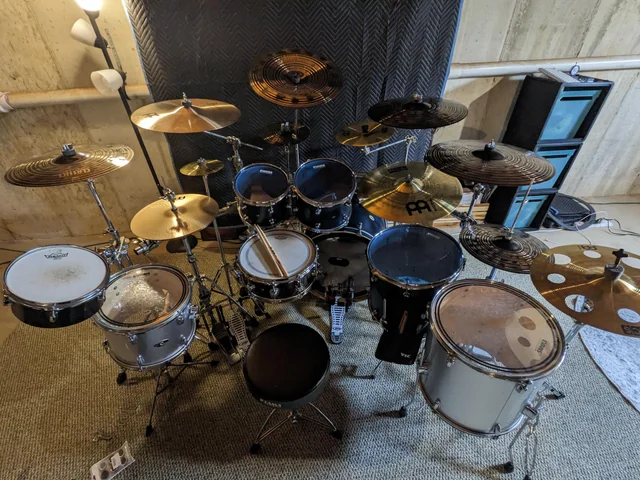The scimitar drum, a musical tool that echoes through the annals of history, has captivated the creativeness of musicians and historians alike. Its extraordinary curved form, paying homage to the Middle Eastern scimitar sword, is as unique because the rich, resonant sounds it produces. Tracing the origins and evolution of this fascinating instrument provides a window into the cultural and inventive traditions that have fashioned its improvement over centuries.
The scimitar drum‘s roots can be determined in historical civilizations wherein drums performed a relevant position in ceremonial and social activities. The earliest sorts of the drum were easy, comprised of herbal substances readily available within the surroundings. As societies stepped forward, so did the complexity and craftsmanship in their instruments. The introduction of metalworking allowed for the introduction of greater durable and difficult drum our bodies, paving the way for the unique layout of the scimitar drum.
Craftsmanship and Design
The scimitar drum is outstanding with the aid of its curved, scimitar-like body, usually made from metallic including brass or copper. This design now not handiest offers the drum its call however additionally complements its acoustic residences. The curvature permits for a wider variety of tones and a richer, extra vibrant sound. The drumhead, usually crafted from animal disguise or artificial materials, is stretched tightly across the body, and its tension may be adjusted to supply exclusive pitches and tones.
The process of creating a scimitar drum is a testament to the talent and artistry of its makers. Each drum is hand made, with artisans meticulously shaping and tuning the tool to attain the desired sound high-quality. The problematic styles and decorations that often enhance the drum’s floor reflect the cultural historical past and inventive sensibilities of the region where it is made. These designs no longer only add to the visual appeal of the drum but also serve as a mark of the artisan’s craftsmanship.
Musical Applications
The scimitar drum is famend for its versatility and is used in a number of musical genres and settings. Its deep, resonant tones make it a famous desire for conventional Middle Eastern music, where it provides the rhythmic foundation for lots compositions. The drum’s capacity to supply a wide range of sounds, from sharp, staccato beats to clean, rolling rhythms, makes it an invaluable device for musicians seeking to feature depth and texture to their performances.
In addition to its role in conventional music, the scimitar drum has observed a place in cutting-edge musical genres. Its unique sound has been embraced by contemporary musicians who contain it into jazz, international tune, and fusion genres, blending its historical tones with current musical sensibilities. The drum’s adaptability and special sound have made it a fave amongst percussionists and song fans international.
Cultural Significance
Beyond its musical applications, the scimitar drum holds full-size cultural and symbolic which means. In many Middle Eastern and North African cultures, the drum is greater than just an device; it’s miles a image of background and identity. It is often used in rituals and ceremonies, wherein its powerful rhythms are believed to connect the physical and spiritual geographical regions, invoking a feel of team spirit and community.
The drum’s presence in cultural celebrations and non secular ceremonies underscores its significance as a vessel of subculture and continuity. It is exceeded down via generations, with every beat echoing the history and stories of folks who got here before. This transmission of know-how and lifestyle ensures that the scimitar drum remains a colourful and enduring a part of cultural background.
Learning and Mastery
Mastering the scimitar drum calls for determination and exercise. Aspiring drummers ought to expand a keen experience of rhythm and timing, in addition to the physical dexterity to manipulate the drum with precision. Traditional strategies of gaining knowledge of frequently contain mentorship and apprenticeship, with experienced drummers passing on their abilities and understanding to the subsequent era.
Modern generation has also made mastering the scimitar drum greater handy. Online tutorials, instructional movies, and digital assets provide aspiring musicians with the gear they want to hone their craft. Despite those advancements, the essence of learning the scimitar drum stays rooted in practice, perseverance, and a deep respect for the tool’s cultural significance.
The Future of the Scimitar drum
As the arena turns into more and more interconnected, the scimitar drum continues to conform, blending conventional strategies with current improvements. Musicians and artisans are experimenting with new materials and designs, pushing the boundaries of what the scimitar drum can achieve. These innovations are increasing the drum’s repertoire and introducing its captivating sound to new audiences around the globe.
The drum’s enduring enchantment lies in its capacity to bridge the beyond and the existing, connecting ancient traditions with modern musical expression. As lengthy as there are musicians who respect its precise sound and cultural importance, the scimitar drum will continue to thrive, resonating through the a while with its enchanting rhythm.
Conclusion
The scimitar drum is greater than just a musical instrument; it’s far a image of cultural heritage, inventive craftsmanship, and musical innovation. Its adventure from historical civilizations to cutting-edge tune stages is a testomony to its enduring enchantment and flexibility. Whether used in conventional ceremonies or contemporary performances, the scimitar drum’s wealthy, resonant tones keep to captivate and encourage, making sure its area in the pantheon of remarkable musical units for generations to come.
Embracing the scimitar drum is to embody a chunk of records, a work of artwork, and a vessel of rhythmic expression. Its story is considered one of transformation and continuity, echoing the undying human preference to create, have a good time, and connect thru song.


